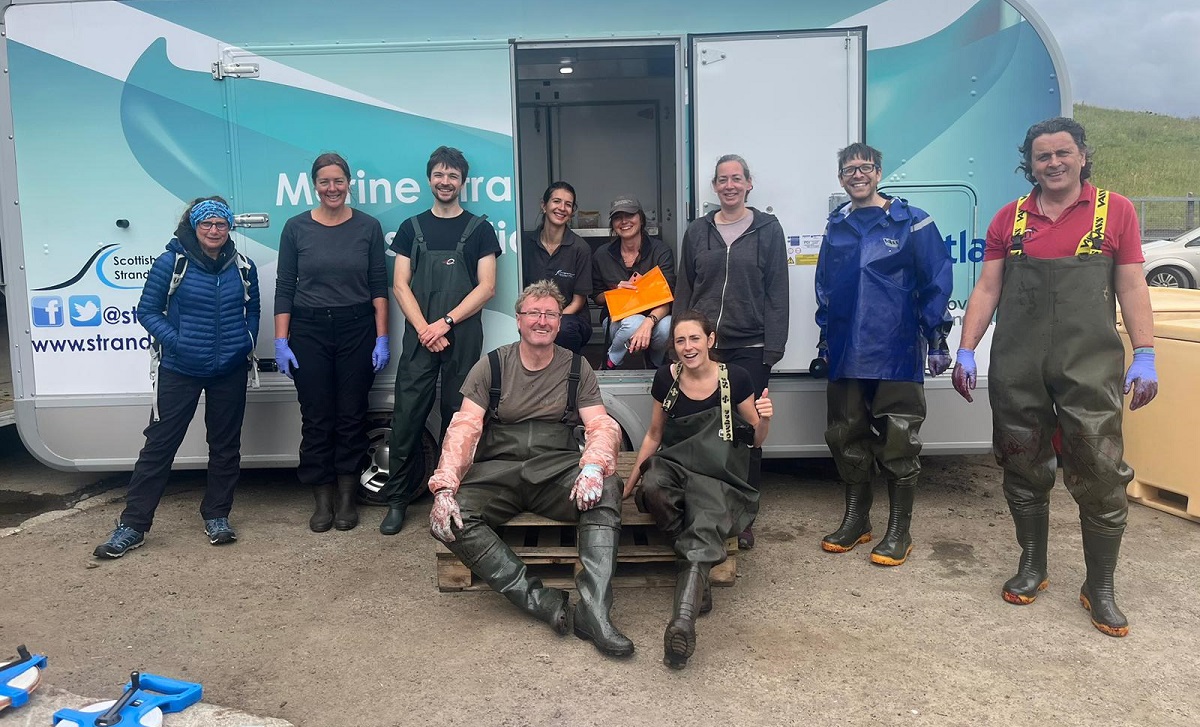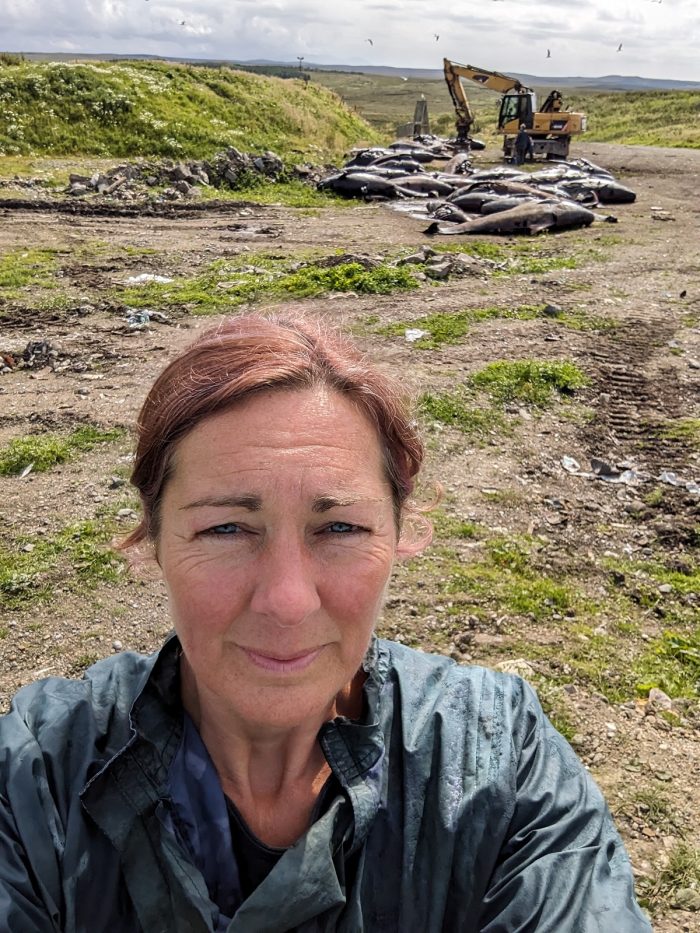Looking for answers in the tragic mass-stranding of long-finned pilot whales in Scotland

Sarah with the rest of the post-mortem examinations team
In the early hours of Sunday 16 July, a pod of 55 long-finned pilot whales stranded on the beautiful, remote Traigh Mhor beach on the Isle of Lewis in Scotland.
The stranding was first attended by British Divers Marine Life Rescue, Stornoway Coastguard and other local authorities. A rescue attempt was made and one whale was successfully refloated. Sadly, the rest either died or were euthanised.
In order to learn as much as possible about these whales in the little time available, a call was put out for help and experts came from the Netherlands and England to assist the Scottish Marine Animal Stranding Scheme (SMASS) to undertake detailed post-mortem examinations.
I travelled up from my home in Fife to Lewis to assist, as a trained SMASS volunteer. The vets and biologists undertook as many detailed examinations as were possible in the time available while the bodies were still fresh enough to allow for the collection of data.
My role was to record measurements and collect the samples taken (including skin, muscle, stomach contents, internal organs and ears) and to bag and label them individually so they could be frozen for bacteriology and histopathology analysis back at the lab. With all the data collected, a huge amount will be learned about this unfortunate pod. And while it was a fast-paced and productive week, the team also could not help but take the time to reflect on the sad situation that had unfolded.
They appeared to be a generally healthy group of whales, made up of all sizes from very large males to a small newborn calf, whose foetal folds were pronounced and whose tail was still somewhat curled from being inside their mother’s womb. A number of the females examined were lactating or pregnant – at least two contained foetuses that were just 5-6cm long – so the true death toll was unfortunately higher than the 55 whales identified on the beach.
The post-mortem examinations revealed that a female seems to have got into difficulty giving birth and this may have been what brought the pod ashore. Pilot whales live in incredibly sociable and strongly bonded groups. Often, tragically, when a sick or injured pilot whale comes ashore, the rest of the pod will follow.
But what were these whales, typically found offshore, doing in coastal waters in the first place? Did some activity occur that brought them in from offshore waters that we do not know about? These questions are an important part of the investigation.
In 2008, a multi-species mass stranding of deep-diving species, including 22 pilot whales, happened across the UK and Ireland and, in this incident, military activities could not be ruled out.
In 2011, about 70 pilot whales came into coastal waters of the Kyle of Durness following military detonations taking place close by. There, 39 whales stranded, of which 20 were refloated and 19 subsequently died or were euthanised. The following year, in 2012, 26 whales stranded in Fife, where 10 were refloated and 16 sadly died. Two further strandings occurred in 2015, on Skye (five of 21 whales died) and in Inverness (four whales found in a considerably decomposed state). The pod off Skye also contained a female that showed signs of having difficulty giving birth.
Back in 1950, 147 pilot whales stranded and died on the East Lothian beach of Dunbar. Pilot whale strandings have happened in Scotland and in other parts of the world, perhaps most famously in New Zealand, for centuries. Often we do not understand why these deep-diving offshore whales come into shallow coastal waters and then strand. In some cases, the cause will be natural, but in others, human causes may be the reason. Often times we cannot get to the bottom of it. However, undertaking post-mortem exams are vital to provide as much detail as possible, to help fit together pieces of the jigsaw puzzle. As appropriate, this information can then be used to inform government decision-making.
SMASS will conclude the investigation in the coming weeks and months, investigating anthropogenic as well as natural causes for the stranding and subsequent deaths, and a report will be available in due course.




